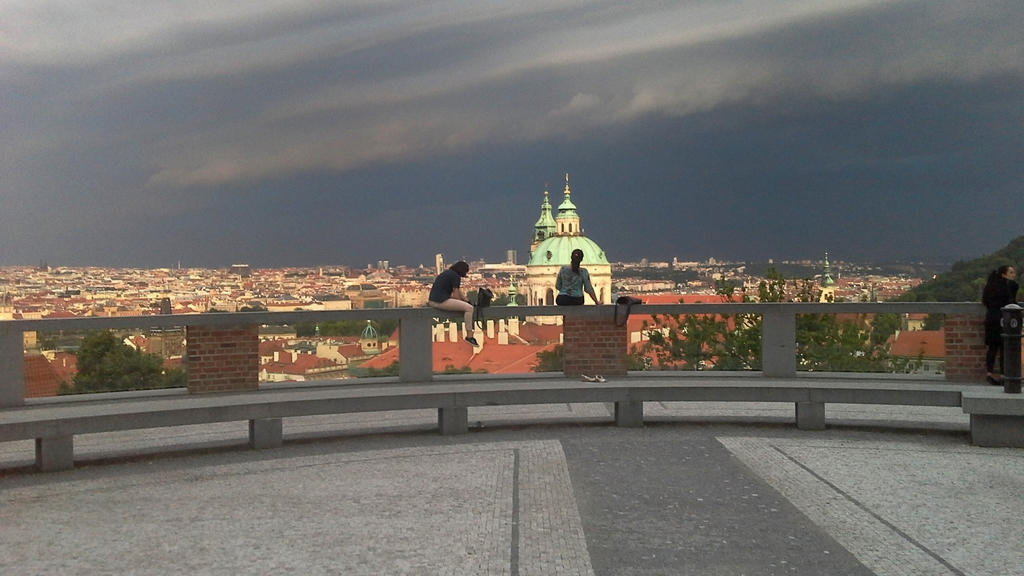BAREFOOT SUITABILITY
1. Surfaces of the city center
Grade: 2
(perfect: 1, mostly pleasant: 2, mix pleasant / uncomfortable: 3, rather uncomfortable: 4, mostly
uncomfortable: 5)
Prague (Czech: Praha) is the capital of the Czech Republic and has a long and significant historical and cultural past. It has been a royal and imperial residence as well as the location of the oldest university in Central Europe. The historic center is a UNESCO World Heritage Site and is extremely popular with tourists due to its world-famous cityscape, its historical and diverse buildings as well as romantic small alleys, large and small squares and impressive boulevards. The Old Town and the Jewish Quarter are located east of the river Vltava. On the western side you find the castle district (Hradčany) surrounding Prague Castle (Pražský hrad) and the St. Vitus Cathedral (Katedrála sv. Víta). The Lesser Town (Malá Strana) is located between Castle Hill and Vltava. The two sides are connected by the medieval Charles Bridge (Karlův most). You should take several days to visit Prague, there is so much to see and feel here.
I know Prague from several short stays of just a few days. At two of them I could experience the city on bare feet.
The historic districts are partly car-free and almost entirely covered with all kinds of paving and partly historic pavement slabs.
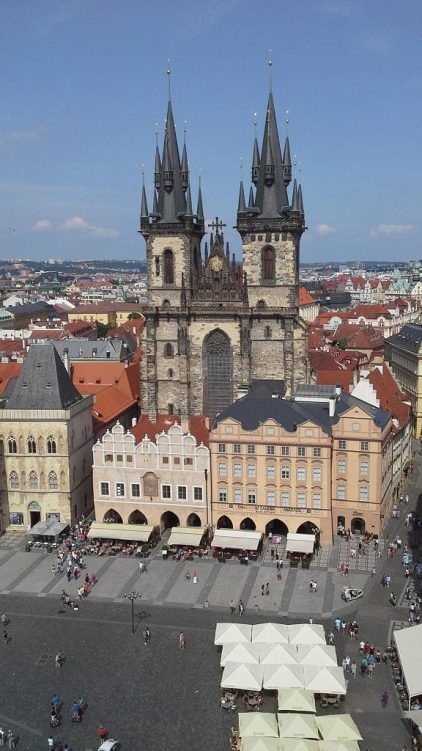
Also the normal roads are pleasantly paved, as in the splendid Jewish Quarter (Josefov).
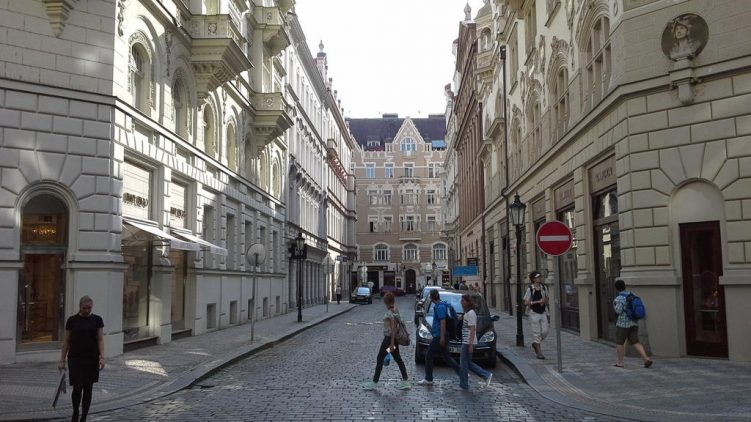
A very old, accordingly bumpy and for bare feet rather unpleasant paving is found at the Golden Lane (Zlatá ulička) within Prague Castle (see below, chapter ‚Peculiarities‘).
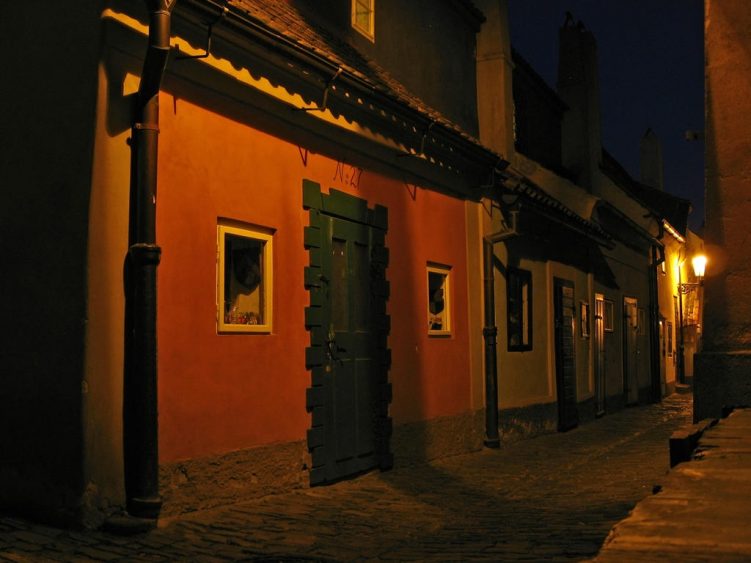
Elsewhere on castle hill you equally find quite old, very uneven paving. However, it is still quite pleasant to walk barefoot here as stone surfaces and edges are worn off and rounded accordingly.
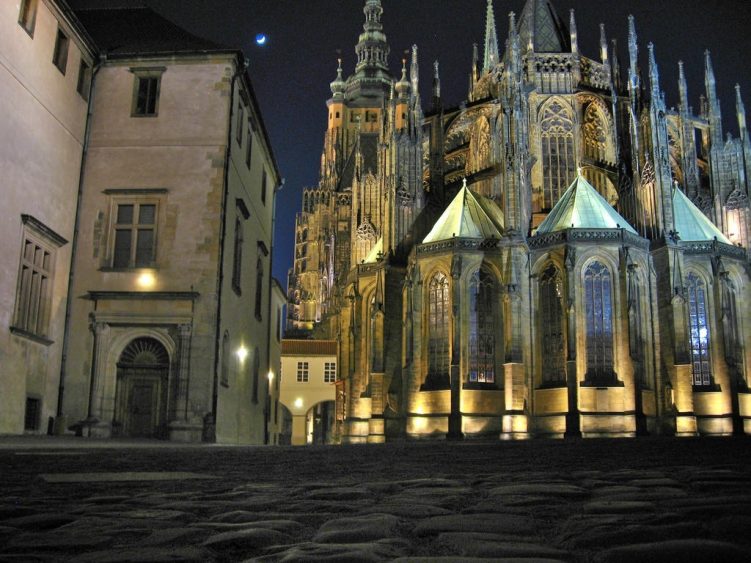
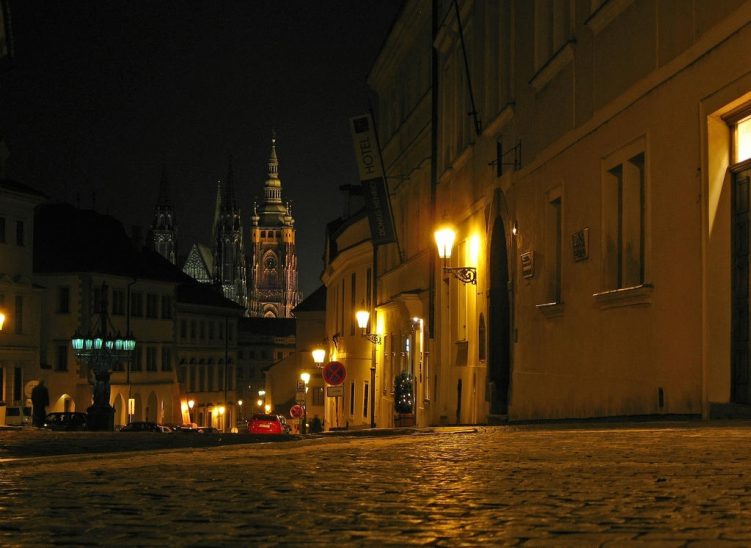
Even new or renewed paving often is surprisingy barefoot-friendly due to stones with rounded or at least broken edges.
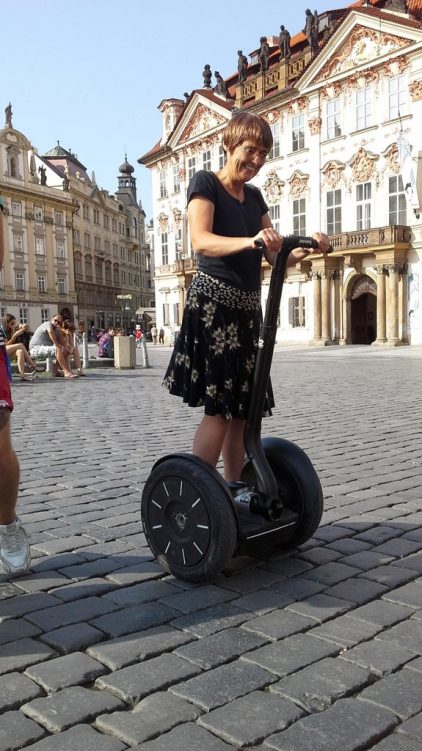
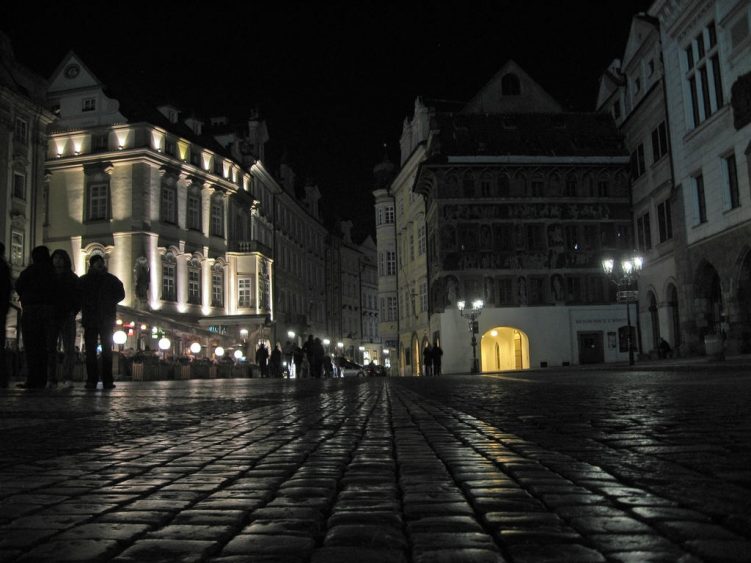
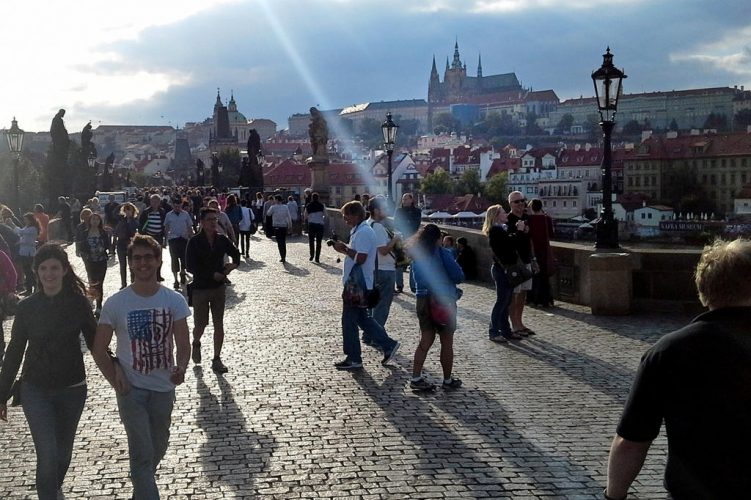
In Old Town you may find paving with geometric patterns like in the next picture, on the the left and right. Smaller paving stones are used, which fortunately still are very pleasant to walk on, very different from the sharp-edged granite stones unfortunately being so popular in German old town renovations that can push barefoot beginners to their limits.
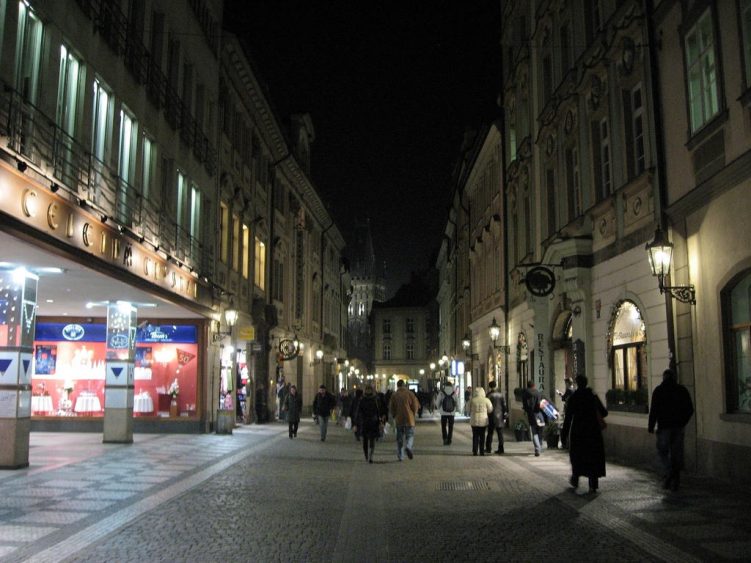
A special feature are large granite plates being up to 2m long with irregular but very pleasant surfaces. You can find them e.g. on Wenceslas Square and also outside the historic center. In the photo below, they are used as curbs for the sidewalk.
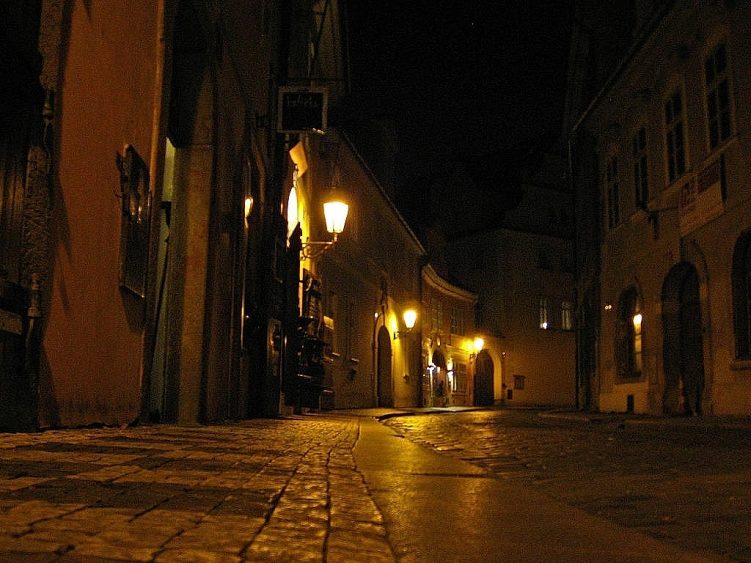
Overall, I found the surfaces of the historic center of Prague to be largely pleasant and definitely very interesting. Walking without shoes enriches the experience of a city that is really worth seeing and feeling.
2. How does the population behave when meeting people walking barefoot?
Grade: 3
(always friendly: 1, often friendly: 2, mostly neutral: 3, more often negative looks: 4, negative looks and
sometimes hostile remarks: 5)
In Prague, people are apparently more busy with other items than the footwear of their fellow men. In any case, I can’t remember a single reaction, either one way or the other.
3. Are there sightings of other barefooted people?
Grade: ?
(daily: 1, every couple of days: 2, every couple of weeks: 3, every couple of months: 4, very rarely or never:
5)
To judge on this issue you have to live here. Except for my charming company, I didn’t see anyone else without footwear during my short visits to the city. There are apparently not many of them. However, several people in Prague are said to be living barefoot.
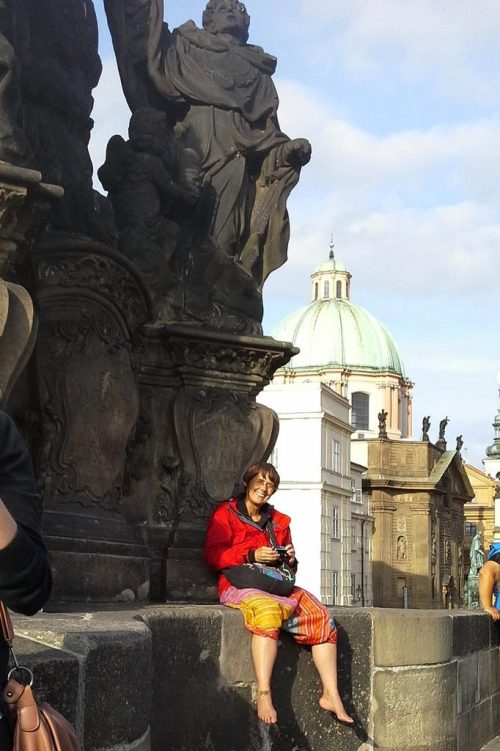
4. Cleanliness of the city center
Grade: 1
(squeaky clean: 1, little rubbish: 2, moderate pollution: 3, somewhat uncomfortable: 4, often
uncomfortable: 5)
The city raised a very clean impression and I didn’t notice any broken glass. Also the train station and the way to the old town do not pose any problem.
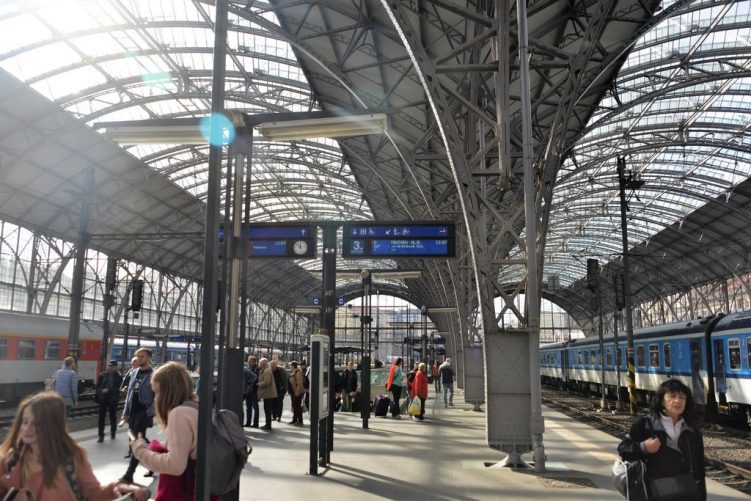
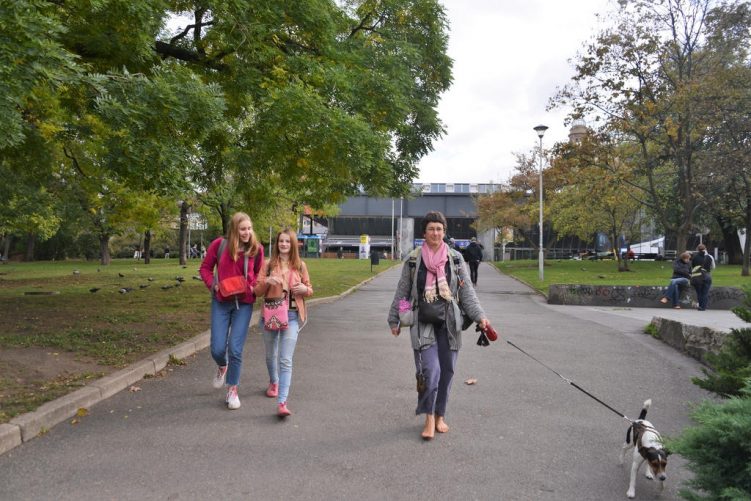
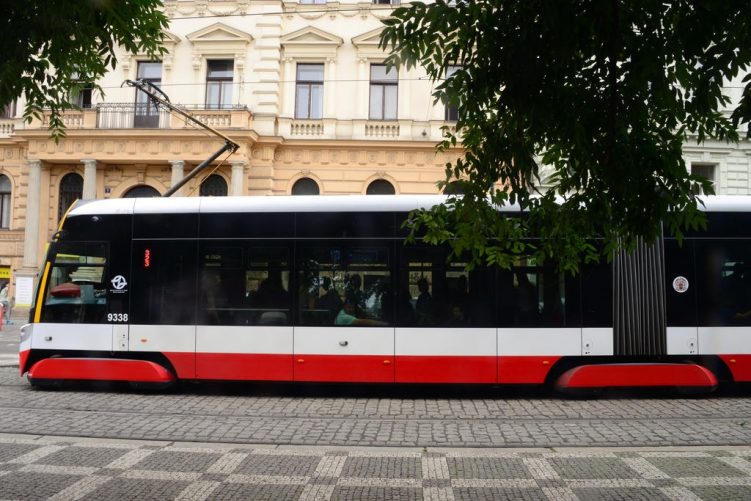
5. Risk of injury in the city center (apart from folk festivals with the usual shards)
Grade: 2
(No risk: 1, rarely, a few places: 2, now and then, but avoidable: 3, you have to be careful more often: 4,
there is a constant risk of injury almost everywhere (lots of broken pieces etc): 5)
The risk of injury appeared to be minimal to me, given the cleanliness of the city. You have to be a bit careful on sections with irregular paving and plates away from the main tourist paths, where protuding edges and possible defective areas like in the picture below might require some attention.
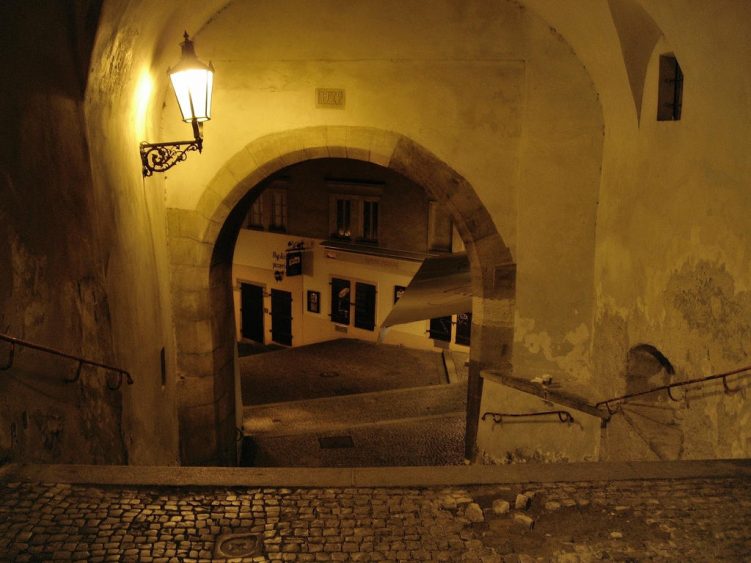
6. Are there any facilities or restaurants in the city (museums, restaurants, etc.) where
there are occasional or regular barefoot problems?
Grade: 1
(no: 1, very occasionally and not always (arbitrary personnel decisions made by individual employees): 2,
few, but regularly (general barefoot ban): 3, often, but not regularly there (arbitrary personnel decisions):
4, often and regularly (barefoot bans): 5)
During my two barefoot stays, I never had a problem anywhere, neither in hotels and restaurants, nor in sights such as Prague Castle, where the president resides and guards watching gates and squares. In a capital with 1.3 million inhabitants and 5 million tourists a year, people are evidently very generous and tolerant and more concerned with items that deserve higher attention than someone without shoes. Of course, I’m not entirely sure here either as due to my short stays I simply lack a wider experience. Comments, especially from the Czech side, are therefore very welcome.
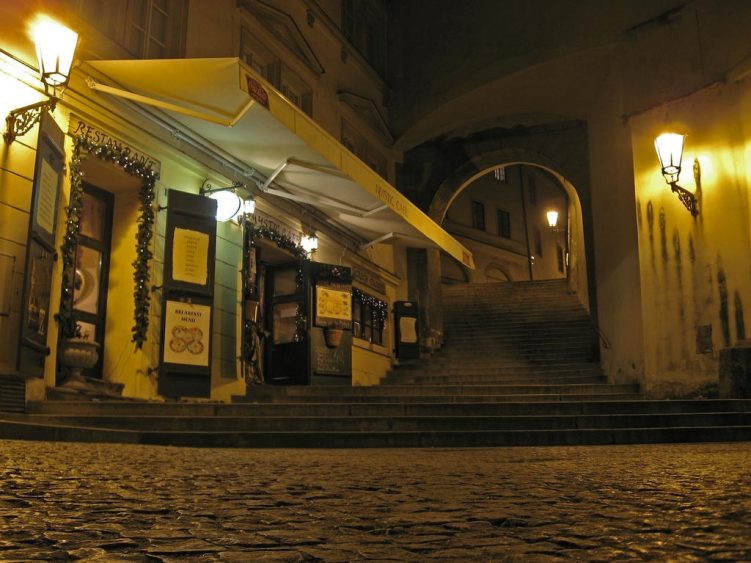
PECULIARITIES
1. Areas of the city that are particularly recommended because of the surfaces:
Old Jewish Cemetery
With its more than 12,000 gravestones, the medieval Old Jewish Cemetery in the Jewish Quarter is extremely impressive. It is surrounded by a wall and exploring it on bare feet is a wonderful experience due to its natural ground. Entering without footwear is possible, but headgear is mandatory. It will be made available for the visit.
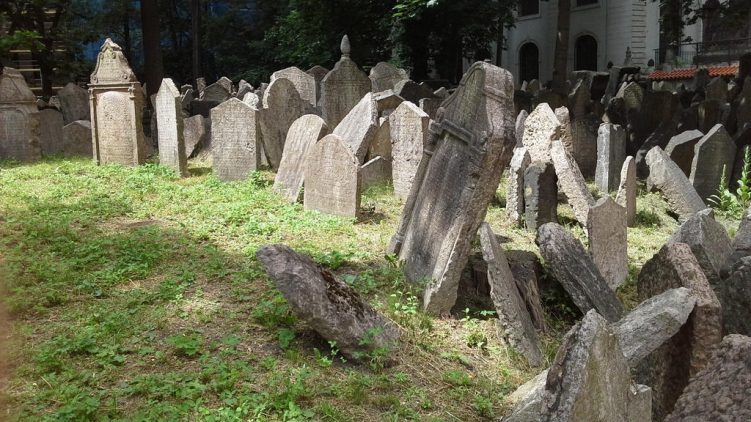
Golden Lane
The aforementioned Golden Lane is somewhat hidden within the area of Prague Castle. The pavement is very old, very irregular and bumpy. Not exactly pleasant and a bit demanding for barefoot beginners, but still an experience when being barefoot. Mainly you come here to see the many small houses from the 16th century and to visit the souvenir shops and cafes. They give an impression of under which conditions goldsmiths and poor people were living here. Franz Kafka resided here for a short time. Entry fees are requested during the day. Access is free in the evening when the houses are closed of course.
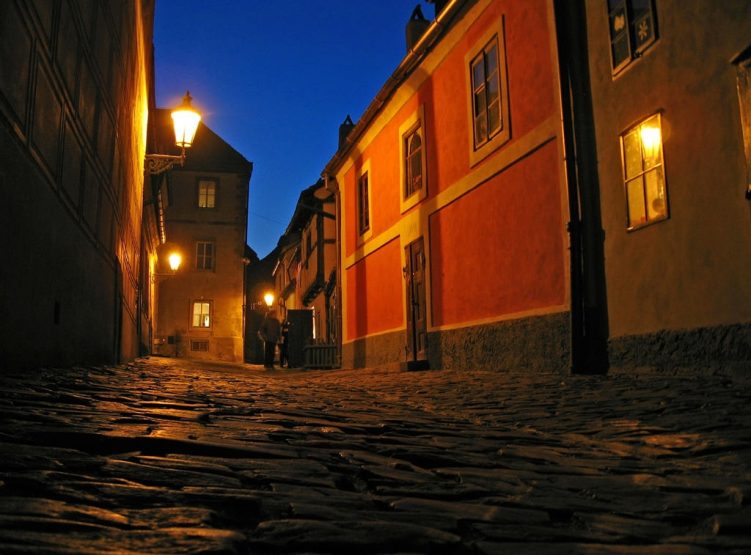
2. Barefoot paradises in the immediate vicinity
Petřín Hill
A rewarding destination is the Petřínské sady park on Petřín Hill south of Prague Castle, to which you can also take a funicular for the price of a tram ticket. The paths are gravelled, but you can easily switch to lawns. There is an observation tower, a restaurant, a rose garden and many beautiful views of the old town if you take a longer walk.
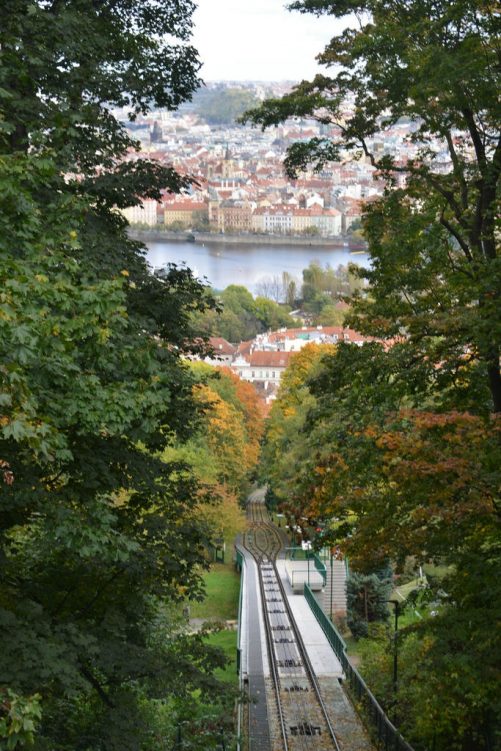
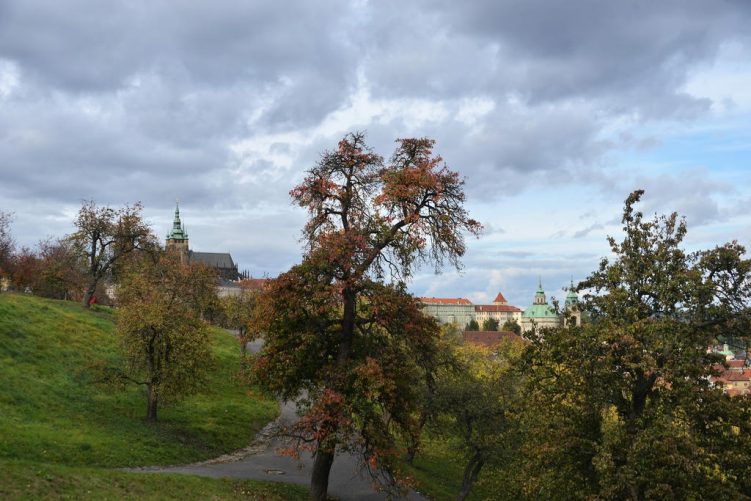
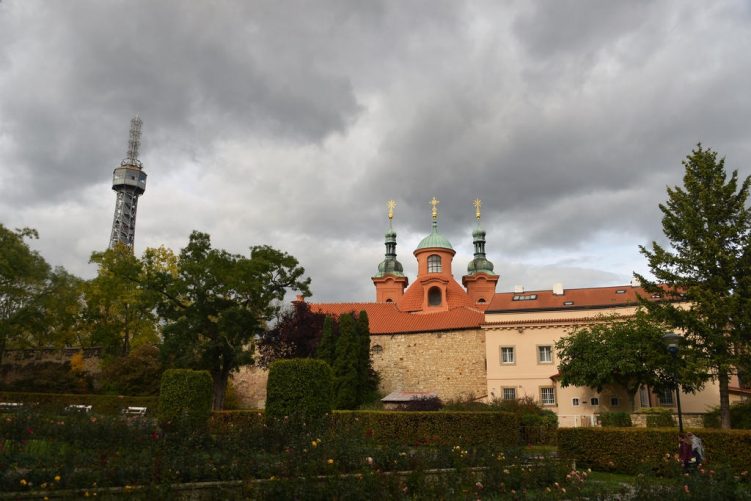
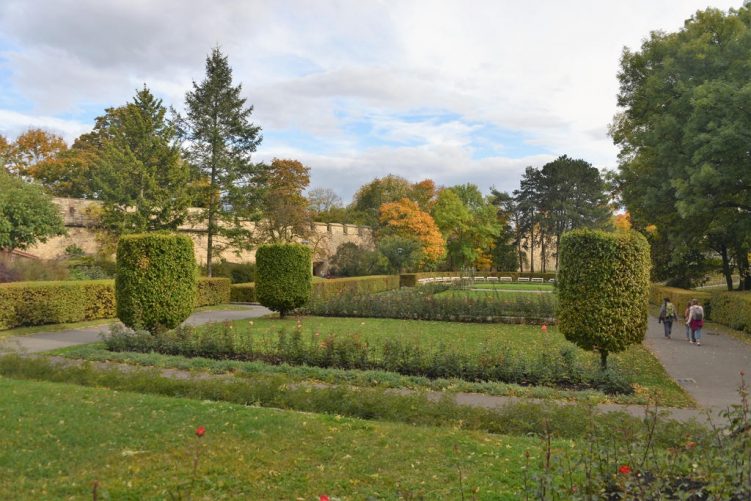

Complemented by:
Angela Reiser: Assessment barefoot friendliness Goldenes Gässchen
Dorothea Burkhard: Barefoot friendliness and cleanliness of the main train station; Chapter Laurenziberg
Summary (Grades)
|
Sufaces |
2 |
|
Reactions |
3 |
|
Other barefoot people |
? |
|
Cleanliness |
1 |
| Risk of injury |
2 |
|
Problems |
1 |

Ich bin Jahrgang 1955, Vater zweier erwachsener Töchter, und verbringe seit dem Sommer 2016 viel Zeit im traumhaft schönen Allgäu bei Füssen, wo Eva schon länger ihr Zelt aufgeschlagen hat. Hier kann ich zusammen mit ihr meiner Berg- und Radfahrleidenschaft frönen. Barfuß lebe ich seit 2012. Ich bin Autor von „Fünf Jahre barfuß“.
